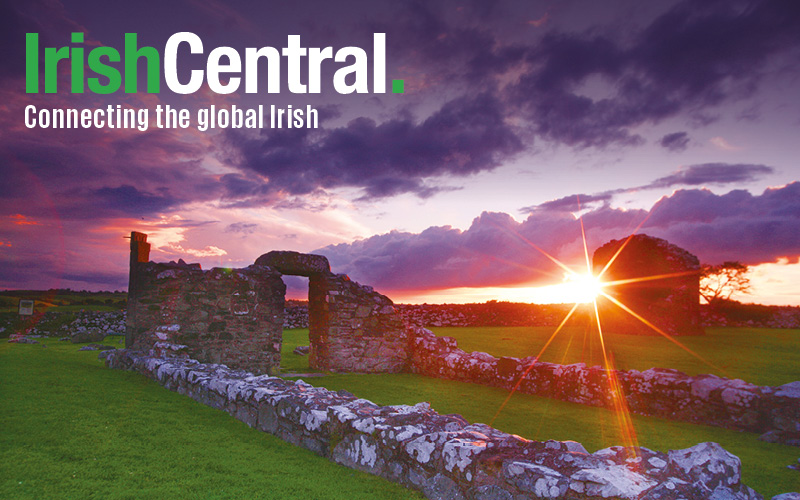Why Life can defeat death in Northern Ireland
By Tim Pat Coogan
There are two time bombs ticking away in Northern Ireland. In fact some would argue three, given the potentially explosive effect of cross-Border shopping by the Republic’s citizens on the economy of the 26 Counties.
But in view of the serious situation created by the recent lethal Republican activity in the North I will leave this topic to another day and concentrate on two of the bombs: 1) The Real IRA, and 2) The demographic changes now occurring, which, though they could trigger dangerous reactions, might also bring about a peaceful de-fusing of all three challenges. Ironically they could very well achieve through life what the Republicans seek through death: a United Ireland.
Taking the Real IRA issue first. From the signing of the Good Friday Agreement back in 1998 the elephant in the room has always been the reaction of rejectionist, physical force republicans.
Were it not for the dead who died in the Omagh explosion we would have had to reckon with that beast’s strength well before the recent shootings of soldiers and a policeman reminded us that they haven’t gone away you know.
The debate, which was eventually won behind closed doors by the followers of Gerry Adams, Martin McGuinness and Gerry Kelly, was at times ferociously passionate, and always carried the whiff of Thermidor and the French Revolution.
Advocates of the settlement were sometimes met by strangers in darkened car parks and driven, in un-marked vans, to meetings they were not certain of returning from, at un-known destinations These meetings often took the form of intense confrontations between senior Provisionals over the merits of the proposals in settings such as the kitchens of farm houses in Fermanagh, Tyrone and South Armagh.
But as the raised voices quietened, finger wagging stopped and jaw muscles relaxed it appeared that the doves had convinced the hawks and that not alone would there be peace, but, it was claimed by the doves, that this time, miraculously, there would be no split. Michael Collins’ experience would not be revisited.
Alas the republican doctrine of continuity, of a rising in every generation is not that easily by-passed. The rejectionists argued that A) When it came to the crunch the Unionists would never honour their side of the bargain B) That the British would shrink from forcing them to do so and C) That the British had no right to be involved in Irish affairs anyhow.
As we know a split did develop in the republican family. Some members rejected the Good Friday Agreement as roundly as did Cathal Brugha and de Valera the Treaty which Michael Collins had achieved. However, this time though there were Cathal Brughas a plenty there was no de Valera, no political rejectionist of a stature who might have mobilised a significant section of public opinion in favour of rejecting half a loaf in favour of no bread.
What did remain were those isolated farm houses, a limited degree of military expertise and the ABC view of Irish history. Most of the Provisionals’ top guerrillas and bomb makers went with the peace party. Omagh disrupted the Real IRA’s hopes of either persuading them to change sides or of fairly speedily replacing their expertise with their own. Now it would appear that a little of both may have occurred, with the Continuity IRA, hitherto one of the lesser republican groups, appearing on the scene, subsequent to the shooting of the two soldiers, to kill a policeman either acting in tandem with the RIRA or merely by coincidence.
In seeking guidance as to whether hawks or doves will win the battle for hearts and minds which will undoubtedly be played out in the coming months it may be instructive to examine two tipping points in the IRA’s history. One is the shooting of three off-duty British soldiers at a pub in Ligoniel, Belfast in March 1971, the other the IRA’s promulgation in 1950 of what became its Standing Order No.8 which laid it down that henceforth action was to be directed solely against Crown forces, no hostilities were to be waged against the Republic’s security forces.
It was issued, not out of altruism, but because the IRA of the time realised that after the deaths, hunger-strikes, jailings and gun battles of earlier years that the southern population would not tolerate violence directed against either its police or army.
In the case of Ligoniel the deaths of the three young Scottish soldiers, two of them brothers and teenagers, were marked poetically by Seamus Heaney with the line “their bellies full of beer and bullets” and politically by the North’s going over the cliff.
The sympathy which many, including nationalists felt for the dead soliers was overwhelmed by the huge loyalist political convulsions which led to Brian Faulkner’s becoming Prime Minister and internment being introduced to Northern Ireland a few months later. Standing Order No. 8 however helped to greatly curtail IRA violence in the South.
Inevitably some security personnel lost their lives, but, over the 30 years of “the troubles”, the South, compared to the North, remained a haven of tranquillity.
The recent shootings were directed at the Adams party’s influence over the Republican family as much as at their direct victims. The RIRA also sought to provoke a Ligoniel type backlash amongst loyalists. This has been unequivocally rejected by contemporary loyalist leaders.
In their own way Gerry Adams and Martin McGuinness have met the challenge by issuing a contemporary version of Standing Order No. 8. McGuinness, by branding the RIRA as “traitors to the Irish nation.” Adams by making the historic declaration that in his view the shooting of soldiers is as reprehensible as the shooting of policemen. Policemen will still examine their cars for bombs before getting into them. Will be well advised to vary family routines, such as driving children to school, or partners to supermarkets. But those precautions may not be long lasting.
For what Adams, McGuinness, and, let it be acknowledged their Unionist counterparts, may have done is to establish as a functioning tenet of daily political life the reality that though the fundamentalists may legitimately claim to be the Keepers of the Sacred Flame of Irish Physical Force Republicanism the majority want to see approaches to power take place only with a ballot box in one hand and---a ballot box in the other. And what has the demographic time bomb to do with all this? A very, very great deal is the answer.
For, largely over-looked in the welter of publicity produced by the recent killings, we now have to hand the findings of the Department of Education’s 2008-2009 Schools Census. This confirms statistically something which I have long believed to be the case, based on my own observations and research. Namely that the Catholic school (and university) population was increasing while that of the Protestants was declining. The statistics given by the Department for the current school year are that currently the Catholics number 50.9 per cent, Protestants 40.7 per cent and the accompanying graphs illustrate clearly that Catholic gains and Protestant decline are an accelerating trends.
These schoolgoers have one thing in common. They will all be entitled to vote when they reach 18. A Catholic majority therefore is not a Six County electoral mirage. It is a clearly visible prospect on the political horizon. In the circumstances there is a clear cut political, as well as a moral, imperative for the Republican extremists to allow life rather than death to achieve their objectives.




Comments